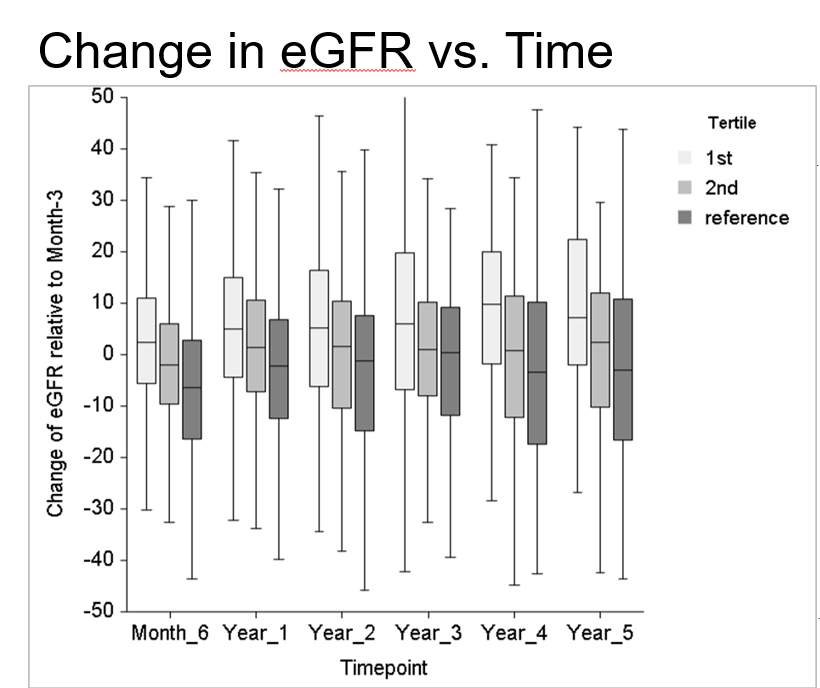Early Reduction of Tacrolimus Trough Levels Improves Long-term Kidney Function without Increase in Incidence of Acr
1Department of Surgery, University of Pennsylvania, Philadelphia, PA, 2Data Analytics Center, Penn Medicine Information Systems, University of Pennsylvania Health System, Philadelphia, PA
Meeting: 2021 American Transplant Congress
Abstract number: 1095
Keywords: Calcineurin, Glomerular filtration rate (GFR), Rejection, Renal function
Topic: Clinical Science » Liver » Liver: Immunosuppression and Rejection
Session Information
Session Name: Liver: Immunosuppression and Rejection
Session Type: Poster Abstract
Session Date & Time: None. Available on demand.
Location: Virtual
*Purpose: We examined the impact of clinical practice management of tacrolimus trough levels in liver transplant recipients on kidney function and incidence of rejection in the first 5 years after transplantation.
*Methods: Serial tacrolimus trough levels, eGFR, and the incidence of acute rejection were collected on adult liver transplant recipients at 6 months and yearly up to 5 years after transplantation (n=874). Change in tacrolimus levels at each time point was correlated with change in eGFR, and with incidence of rejection.Participants were divided into tertiles based on magnitude of adjustment in tacrolimus trough dosing from baseline (defined as 3 months after surgery) with levels at 6 months and yearly from one to five years. Primary endpoint was change in eGFR at 6 months and subsequently at 1 year intervals compared to baseline post-transplant eGFR. Secondary endpoint was rejection episodes at various time intervals. Patients age at transplant, sex, year of transplant, pre-transplant eGFR, tacrolimus trough levels at baseline, and dialysis status were included as covariates in the regression analysis.
*Results: Participants with the greatest reduction in tacrolimus trough dosing (first tertile) showed improvement in eGFR compared to the patients with the least reduction in tacrolimus doing (the third or reference tertile) across all time points. This was most apparent at 6 months and 1 year after transplantation (increase in eGFR by 8.79±1.37 mL/min and 7.83±1.66 mL/min, respectively), and remained consistent over the study time period. There was a statistically significant increase in percentage of participants requiring dialysis at 4 and 5 years in the reference group (with least tacrolimus adjustment) (6.9% and 10.3%, respectively). There was no difference in the incidence of rejection across tertiles at one year (2.0% vs. 2.0% vs. 3.5%, p = 0.43).
*Conclusions: Early and sustained reduction in tacrolimus levels after transplantation were associated with long term improvement in kidney function, with no increase incidence of rejection. Minimal changes levels led to higher incidence of end-stage kidney failure.
To cite this abstract in AMA style:
Chen M, Loza B, Chang A, Byfield R, Olthoff K, Shaked A. Early Reduction of Tacrolimus Trough Levels Improves Long-term Kidney Function without Increase in Incidence of Acr [abstract]. Am J Transplant. 2021; 21 (suppl 3). https://atcmeetingabstracts.com/abstract/early-reduction-of-tacrolimus-trough-levels-improves-long-term-kidney-function-without-increase-in-incidence-of-acr/. Accessed June 30, 2025.« Back to 2021 American Transplant Congress

